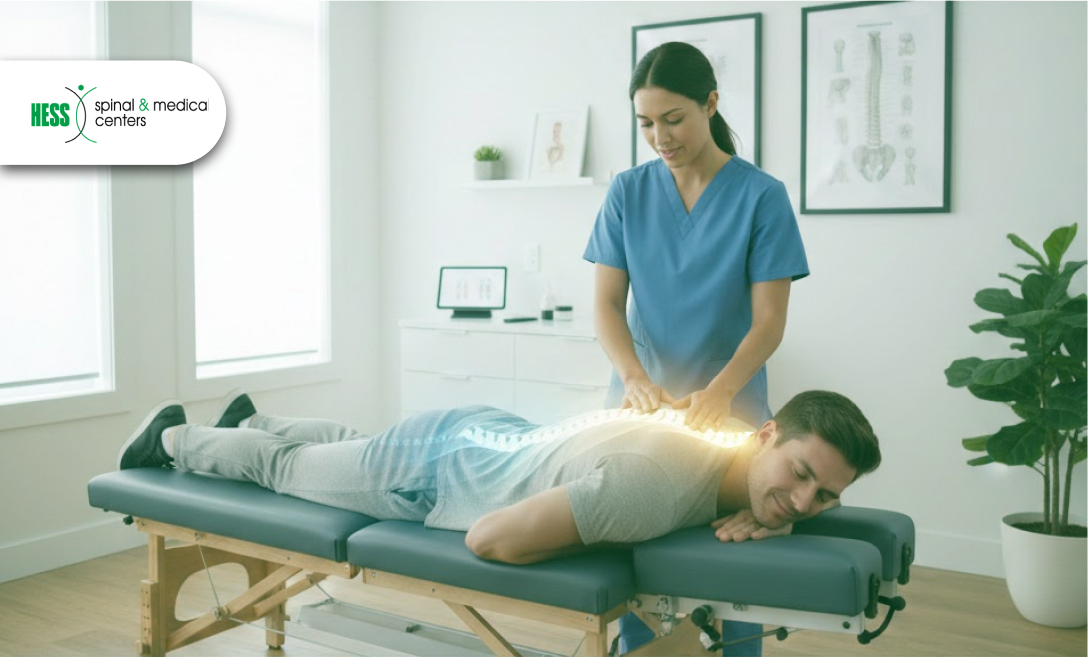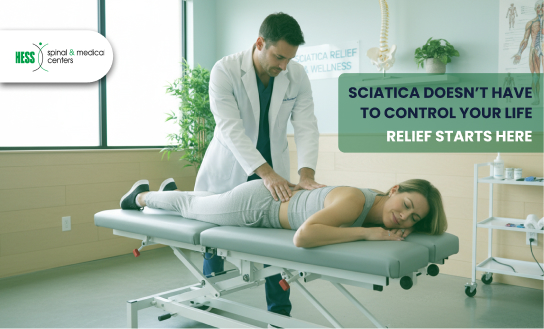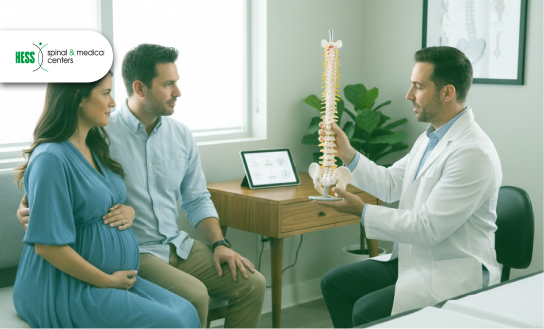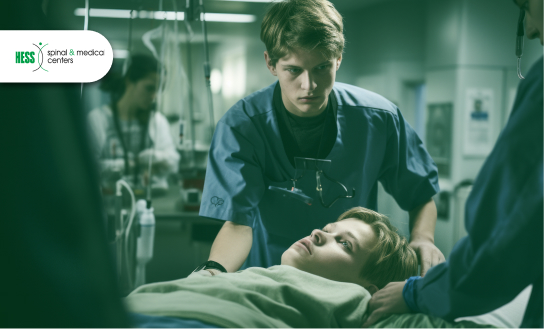
Can a Chiropractor Help with Herniated Discs Without Surgery?
Chiropractic Manipulation
October 21, 2025
Can a Chiropractor Help with Herniated Discs Without Surgery?
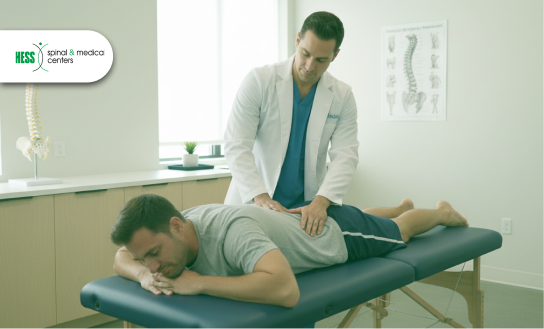
There’s a strange silence that settles in when you’ve been in pain for too long. It’s not just the discomfort, it’s the not knowing. Not knowing if this is your new normal. Not knowing if you’ll ever move the same way again. And then, just like that, someone says the word “surgery.”
Maybe you nod. Maybe you panic. Maybe you start searching late at night for something—anything—that might mean less risk, less downtime, less of that gnawing fear in your gut.
However, most herniated discs don’t need surgery. There is a path that doesn’t involve scalpels or hospital gowns. And it begins where most people stop looking...
1) What Is a Herniated Disc And Why Does It Hurt So Much?
Think of the discs in your spine like tiny jelly donuts, soft on the inside but tougher on the outside. They’re built to cushion your vertebrae and absorb shock as you move through life. But sometimes, that “jelly” inside gets pushed out through a tear in the tougher outer layer. That’s a herniated disc.
However, not everyone with a herniated disc experiences the same symptoms. Some people feel a dull ache in their lower back. Others feel sharp, shooting pain down one leg. Some can’t sit for more than ten minutes without their toes going numb. It all depends on where the disc is, how much it’s pressing on nearby nerves, and how your body reacts.
“Herniated discs affect about 5 to 20 out of every 1,000 adults each year.”
Source— National Institutes of Health
It’s more common than people think, and not always the result of a dramatic injury. Sometimes it’s years of sitting, poor posture, or simply aging that causes the disc to weaken and bulge. And when it finally does, the pain can feel like it came out of nowhere.
But the real problem? The inflammation and nerve irritation that follows. That’s what causes the tingling, the weakness, and that deep, radiating pain that can interrupt your sleep, your work, even the way you walk.
And yet pain is just one part of the story.
2) Why People Are Avoiding Surgery (And When That’s a Smart Move)
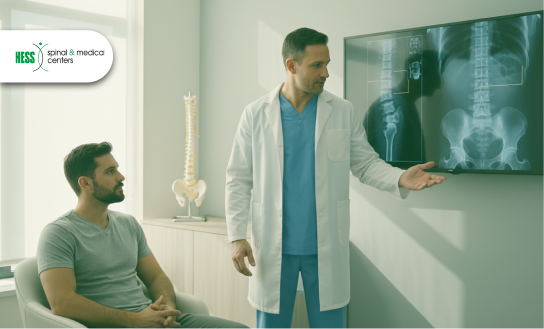
Spinal surgery has the potential to change lives, but it’s also invasive. Recovery isn’t quick. You’re not just healing from back pain anymore; you’re healing from a procedure that cuts through muscle, tissue, and bone. There’s risk of infection, complications from anesthesia, and in some cases, Failed Back Surgery Syndrome, where pain actually persists or gets worse after surgery.
“Back surgery has a failure rate ranging from 10% to 40%, depending on the type and complexity of the procedure.”
Source — Journal of Pain Research
Then there’s the cost—not just financial, but physical and emotional. Time off work, rehab appointments, limited mobility. And all of it with no guarantee the pain won’t return.
That’s why so many people are now exploring non-surgical options first. Chiropractic care, physical therapy, spinal decompression—treatments that focus on helping the body heal itself instead of jumping straight to the operating room.
However, there are cases where surgery is necessary. But for most people dealing with a herniated disc, the smarter first move should be intentional.
3) How Hess Spinal and Medical Treats Herniated Discs Without Surgery
Instead of jumping straight to invasive options, we focus on targeted, non-surgical treatments designed to reduce pressure, restore mobility, and help your body do what it was built to do: heal.
For many of our patients, that starts with gentle spinal adjustments. These are precise, controlled movements that realign the spine and take pressure off the affected disc and nearby nerves. Alongside that, we often incorporate spinal decompression therapy—a non-invasive, computer-guided process that gently stretches the spine and promotes disc rehydration and recovery.
However, we don’t stop there. Many herniated disc issues are linked to surrounding muscle tension, movement imbalances, or posture habits. That’s where muscle release therapy, postural correction, and rehab exercises come in. We use them to support long-term healing, not just short-term relief.
4) What Spinal Decompression Therapy Really Does
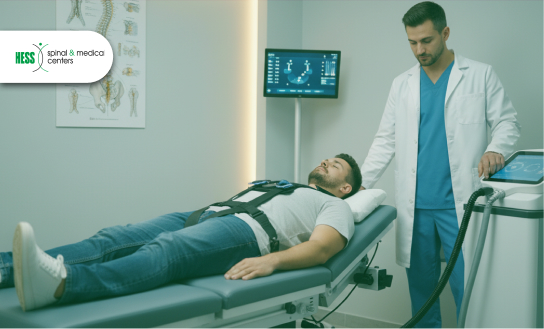
This isn’t a surgery. There are no injections. No downtime. Instead, it’s a controlled, motorized traction technique that gently stretches your spine in a way your body can’t do on its own.
That stretching creates negative pressure within the disc space, pulling herniated or bulging material back into place and relieving pressure on nearby nerves.
But the benefits go deeper than just relief. As the spine expands and pressure drops, blood flow increases. That circulation brings oxygen and nutrients to the disc, two things it desperately needs to repair and rehydrate.
“Spinal decompression therapy shows a 71% improvement rate in patients with disc-related pain.”
Source— Journal of Neurological Research
It’s biomechanics done right. And when used as part of a full care plan, decompression can be a turning point in someone’s recovery.
5) What to Expect During Chiropractic Treatment
It starts with a conversation. We’ll ask about your symptoms, your health history, and how the pain is affecting your life. Then, we’ll do a thorough physical exam, and if necessary, refer you for imaging—like X-rays or an MRI—to fully understand what’s going on beneath the surface.
From there, we build your treatment plan. It’s based on what your body needs, not just your diagnosis. Some patients see improvement after just a few sessions; others need a longer-term plan. A realistic recovery timeline for herniated disc treatment typically ranges from 4 to 12 weeks with consistent care.
“Most chiropractic patients with low back pain report noticeable improvement within 6 weeks of treatment.”
Source— Annals of Internal Medicine
Treatment may involve gentle spinal adjustments, decompression, or soft tissue work suited to your comfort level. And yes, about that “cracking” sound: it’s just gas releasing from your joints, like opening a soda can. It’s painless, and many patients actually find it relieving. But if it’s not for you, that’s okay too. We have alternative techniques that are just as effective without the pop.
6) Who Is (and Isn’t) a Good Candidate for Chiropractic Disc Treatment?
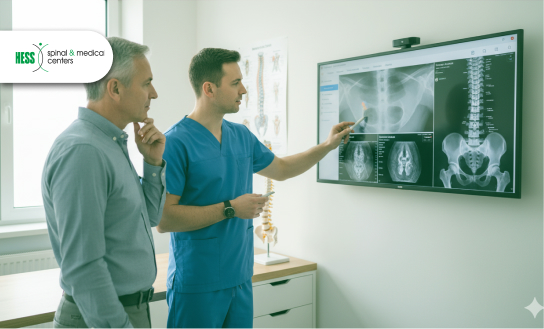
Chiropractic care can do a lot but it’s not the answer for everyone. That’s why one of the first things we look at is whether you’re a good fit for non-surgical treatment.
If you have a mild to moderate herniation, consistent discomfort, and no signs of severe nerve compression—chiropractic treatment may be exactly what your body needs. These are often the people who get the best results: they’re mobile, aware of their pain patterns, and still have good muscle strength despite the disc issue.
But there are cases where we need to hit pause.
If you're experiencing loss of bowel or bladder control, sudden weakness in the legs, or numbness spreading across both sides of your body—those are red flags. In situations like that, we’ll refer you to the appropriate specialist right away. Safety always comes first.
“Roughly 5–10% of herniated disc cases involve symptoms that require surgical or neurologic intervention.”
Source— National Institutes of Health
We don’t work in a bubble. We regularly collaborate with orthopedic specialists, neurologists, and primary care physicians to make sure you’re getting the right kind of care, whether that includes us or not.
7) You Deserve Relief, Not a Scalpel
You don’t have to live in fear of your own spine. And you definitely don’t have to rush into surgery just because it was the first option mentioned.
The truth is, healing doesn’t always require something drastic. In many cases, it just needs space, time, and support. That’s exactly what non-surgical chiropractic care is built on. It’s not wishful thinking. It’s a path backed by real evidence, real outcomes, and real people who walk out feeling better than when they walked in.
So if you’ve been told surgery is your only way forward, let us give you a second opinion. You have options. And we’re here to help you explore them.
Book a no-obligation consultation today. Your spine and soul deserve that chance.
Recent Cases
